
© Carlton Bright. (Click image for larger version)
Kyle Abraham, A.I.M, and Jlin
National Sawdust FERUS Festival: Untitled Commission to Mozart’s Requiem in D minor
★★★★✰
Online premiere 9 January 2021. Available online.
aimbykyleabraham.org
nationalsawdust.org
Kyle Abraham is an important choreographer and an intriguing one. He has been commissioned by Lincoln Center’s Mostly Mozart Festival, Stanford (University) Live, and the University Musical Society of the University of Michigan to make a dance taking off from Mozart’s Requiem in D Minor. For the experimental music venue National Sawdust’s Ferus Festival, online this year (not live in Williamsburg, Brooklyn), Abraham made a short, untitled, video dance with material that will appear, in a different way, in the full production, but which stands alone as a separate creation. I didn’t know what to expect.
Even after viewing a brief preview in which the two dancers from Abraham’s company A.I.M, Keerati Jinakunwiphat and Jae Neal, dance beautifully together, I was quite surprised. The four minute piece turns out to be full of kaleidoscopic effects. It is very handsome and pleasing to see, but short. And it ends abruptly.
But such is often the way of new video creations in the Covid-19 pandemic era. I want to see the whole piece, which will be about an hour long and, as of now, is still scheduled to premiere at Stanford Live in May. The Mostly Mozart Festival, where I would see it, and which provided the impetus for Abraham’s creation of this piece, is canceled for this summer.
FERUS Festival: Kyle Abraham, A.I.M, and Jlin from National Sawdust on Vimeo.
The music for the video takes off from Mozart’s Kyrie and uses string and choral material, but it is transformed by electronic composer JLin (Jerrilynn Patton), who adds an insistent beat. It’s not Mozart as we know him, but it works in this video. JLin’s very different Kyrie becomes an electronic dance score with choral echoes.
Love, Rebirth, Movement, Hope are the words we see at the beginning. They are presumably the themes of the whole piece, since the four minute video has luscious movement, but with its doubling and kaleidoscope effects comes across as a lush blue-shaded abstraction.
Abraham is an African American postmodern choreographer whose morphing dance moves come out of a lifetime of absorbing dance he grew up with plus his extensive dance training in multiple styles. In this video these influences fuse into forceful dance that can be slippery, thrusting, or whirling. The changes are rapid.
At first we see the dancers in quadrants or alone, which is also true at the end. The light is intensely blue. Then the kaleidoscope effects begin, with first one dancer and then sometimes both, making complex and beautiful creatures whose own bodies merge, merge with the black framing supports in abstract patterns, or, merge particularly richly, with each other. The blue walls, too, are very patterned. These effects are multiple, inventive, and surprising.
Giles Deacon’s lovely costumes enhance the dancing and produce alluring kaleidoscopic effects. Both dancers wear different pale shifts with delicate dark markings, Neal’s loose, Jinakunwiphat’s fitted. Neal has a puffy balloon, often red orange or sometimes purple, on one arm; Jinakunwiphat has a kind of bustle of ruffled layers that ties around her waist. The colors change in the blue light and the bustle, sometimes green, often glows pink or red or orange.

© Carlton Bright. (Click image for larger version)
After the dance the much longer talk is hosted by National Sawdust director and curator Elena Park with Abraham, JLin, and Deacon. We learn that the dance for the video was made at Jacob’s Pillow with the two dancers in a bubble. JLin particularly loves the Kyrie and Deacon designed/made the costumes with each individual dancer in mind. Abraham says he doesn’t like to give too much away, so he didn’t say much about the whole piece except that it will have about ten dancers and the material we saw in the video will look quite different. Of course, to have any of the video effects they would have to be projected, though there was no hint that they would be.
I was disappointed that none of the people who made the video were part of the discussion. Abraham did not talk about whether he or the videographers and editors made the decisions about the intriguing kaleidoscope effects. Abraham did mention the editor Oresti Tsonopoulos. As is so often the case with the many videos we’ve been seeing, the credits were dense and on so briefly that it was hard to catch the names of the director of photography (and also an editor) Danielle Sheli Levy, the lighting designer Abigail Hoke-Brady, the second camera operator Carlton Bright, and the technical director Charles Hagaman. All these people deserve plaudits for a beautifully produced piece.
Abraham said that the dancers are now in virtual rehearsals. It must be very difficult to create a complex full length work this way. And though Stanford Live’s website says performances will resume in April, no one would be surprised if this spring’s events were postponed. Needing to complete a piece under pandemic conditions with the possibility that it actually didn’t have to be ready so soon seems an extra exigency. Meanwhile, catch the video, which really does stand alone.








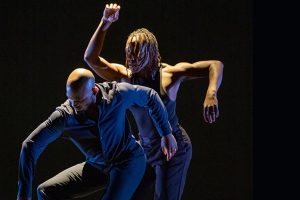
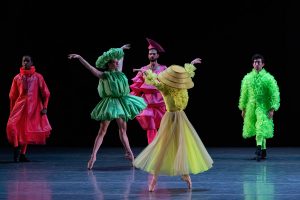



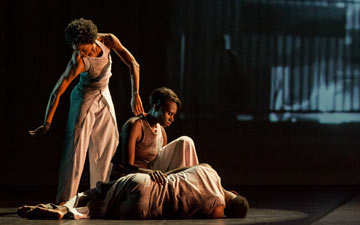

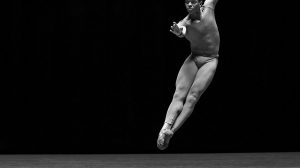
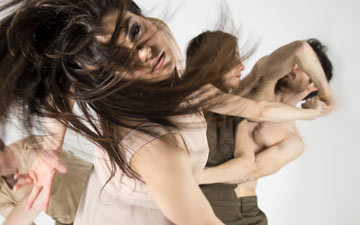
You must be logged in to post a comment.